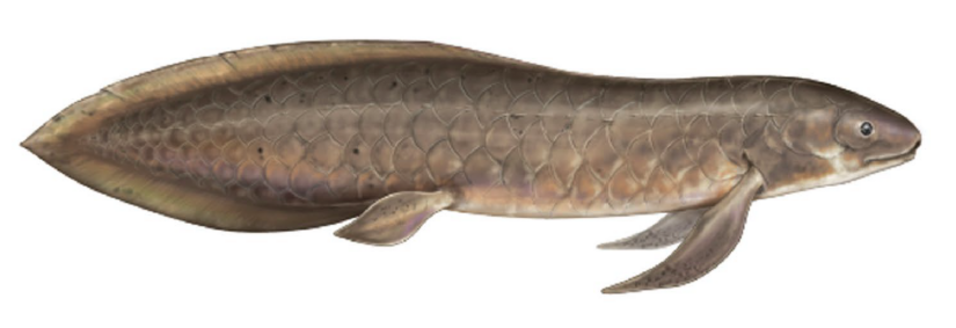Lungfishes belong to lobe-fined fish (Sarcopterygii) that in the Devonian ‘conquered’ land and gave rise to all land vertebrates, including humans. We determined the largest chromosome-quality animal genome, the Australian lungfish, Neoceratodus forsteri. Its vast size (~14x of human) is attributable mostly to huge intergenic regions and introns with high repeat content (≈90%) whose components resemble tetrapods more (mostly LINE elements) than ray-finned fish. The lungfish genome continues to expand (its TEs are still active) independently and by different mechanisms than enormous salamander genomes. Synteny to other vertebrate chromosomes of 17 fully assembled macrochromosomes is maintained just as its conserved ancient homology of all microchromosomes to the ancestral vertebrate karyotype. Phylogenomic analyses ascertained that lungfish occupy an evolutionary key-position as closest living relatives to tetrapods, underscoring their importance for understanding innovations associated with terrestrialization. Preadaptations to living on land include gaining of limb-like expression of developmental genes such as hoxc13 and sall1 in their lobed fins. Increased rates of evolution and duplication of genes associated with obligate air-breathing such as lung surfactants and the expansion of odorant receptor gene-families that detect airborne odours contribute to their tetrapod-like biology. These findings advance our understanding of this major transition during vertebrate evolution.
Link to Nature
Link to article in Der Standard (German)

